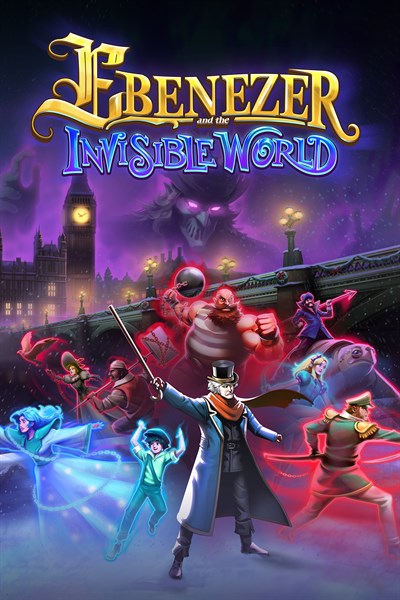Ebenezer and the Invisible World, releasing today,is a fantasy reimagination and sequel to Charles Dickens’ classic Christmas ghost story, “A Christmas Carol”. In this beautiful 2D Metroidvania, players play the role of Ebenezer Scrooge after the events of the original story as he sets off on a Victorian adventure to help the people of London from the greedy industrialist Caspar Malthus.
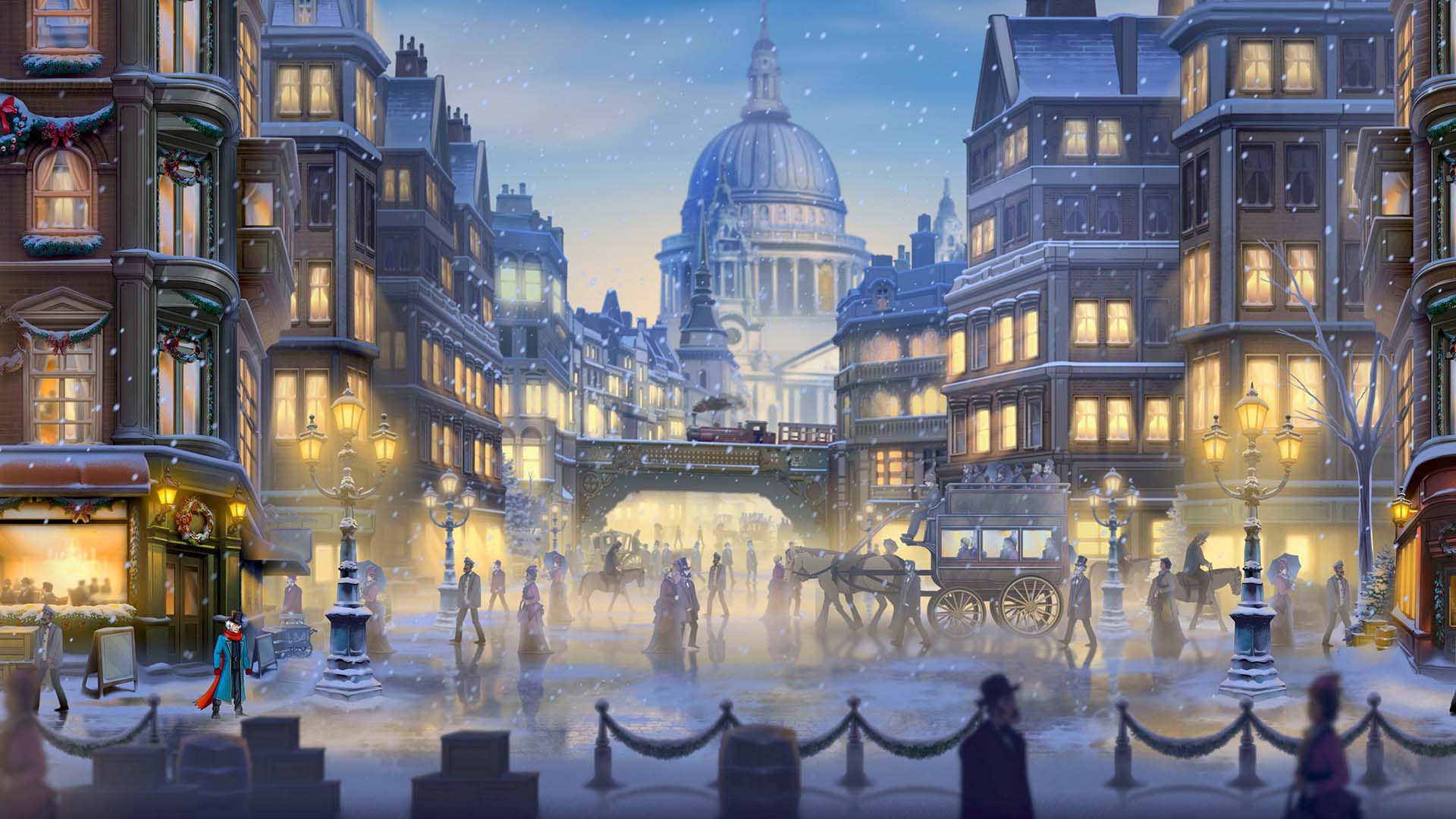
Jacob Marley as Archetype for a Ghost Filled London
The creative process for Ebenezer and the Invisible World began with exploring one character in particular: Jacob Marley.
As many of us know, Jacob Marley was Ebenezer’s friend and business partner who died after living a greedy life. Marley explains that he is condemned to walk the earth among his fellow men while wearing “the chains I forged in life” made “link by link, and yard by yard.”
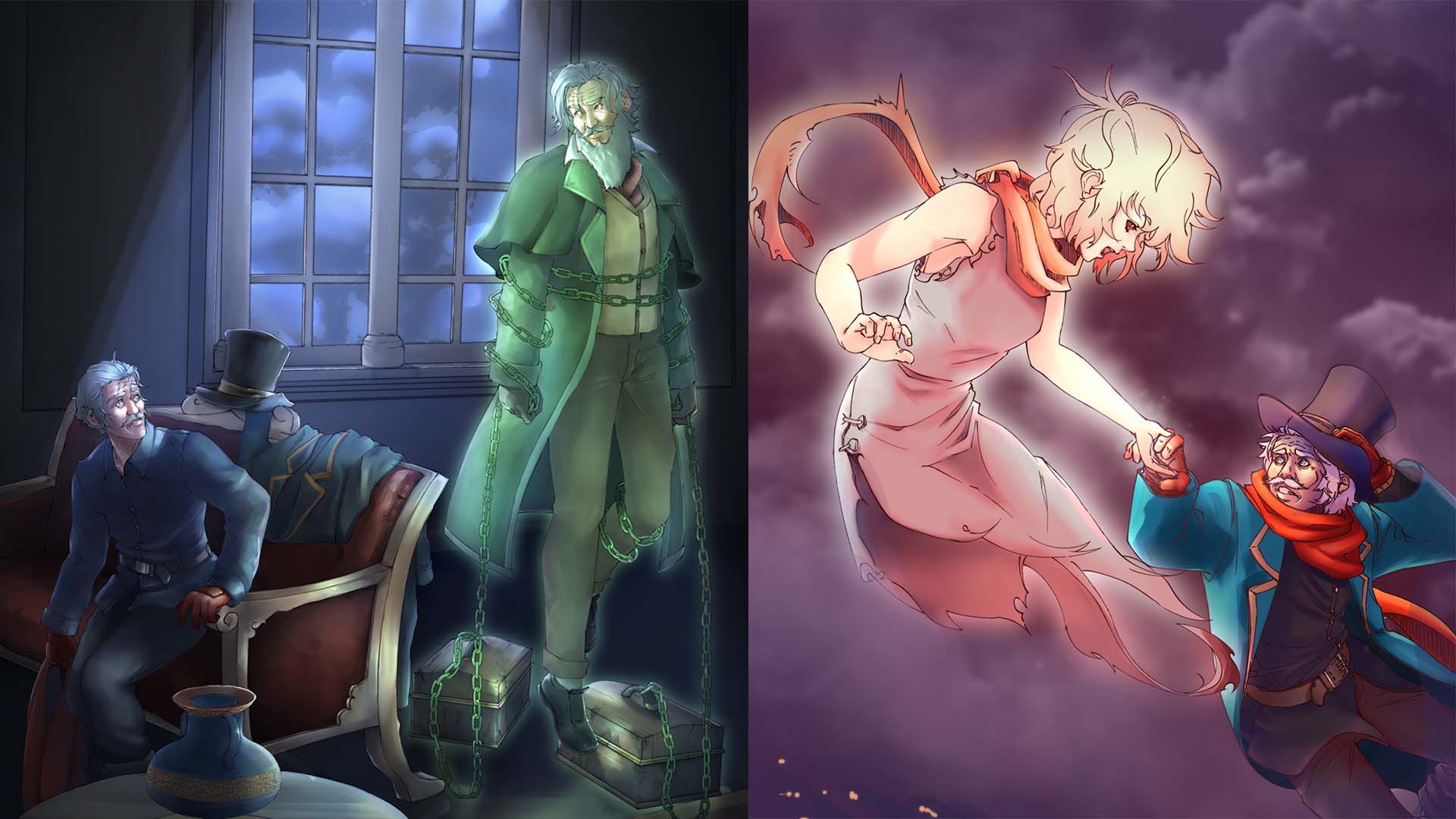
We thought to ourselves, what if Jacob Marley was not the only ghost in London tethered to the mortal world? What if there were others? In fact, what if the world was full of ghosts just like Jacob Marley – all draped in the chains they forged in life? Jacob Marley became our visual archetype for a ghostly population that would fill Victorian London.
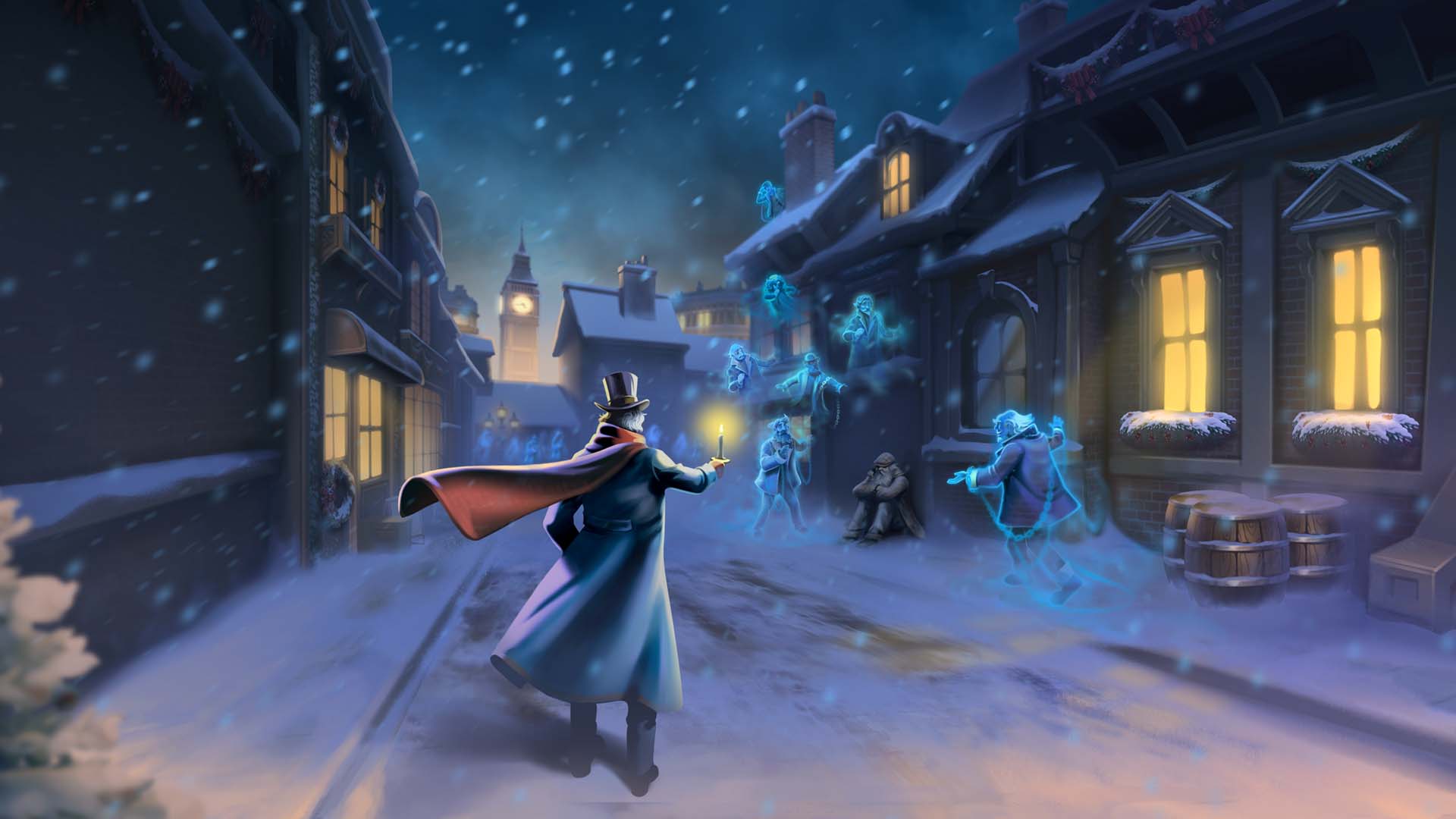
This is a natural extension of the “Christmas Carol” universe. In fact, Charles Dickens contemplated this same concept. He wrote in “A Christmas Carol”, “the air was filled with phantoms. Every one of them wore chains like Marley’s Ghost. The misery with them all was, clearly, that they sought to interfere, for good, in human matters, and had lost the power, forever.”
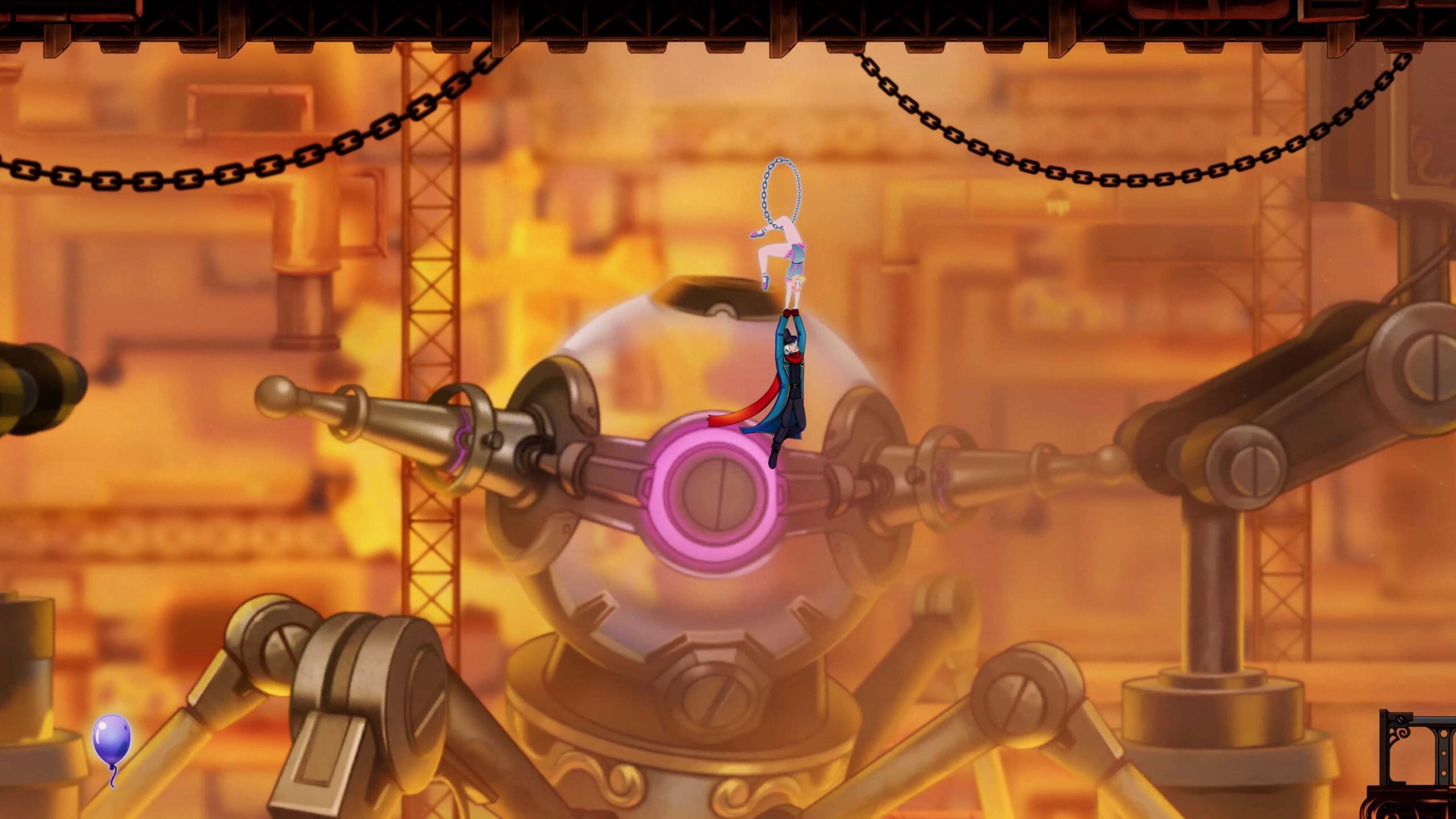
This idea that Dickens puts forth – ghosts wanting to help people but are unable to do so – inspired our next concept: What if these ghosts who want to help “in human matters” but were unable to do so asked Ebenezer to help on their behalf? Afterall, Ebenezer can see and speak with Jacob Marley, so wouldn’t Ebenezer be able to speak with other ghosts? And if they could speak with Ebenezer, we think these ghosts would do more than just seek him out, they would implore Ebenezer to help them.
And so, from this premise the core gameplay loop was born: Ghosts would ask Ebenezer to help a mortal, and he would then engage on a mission to help them on behalf of ghosts.
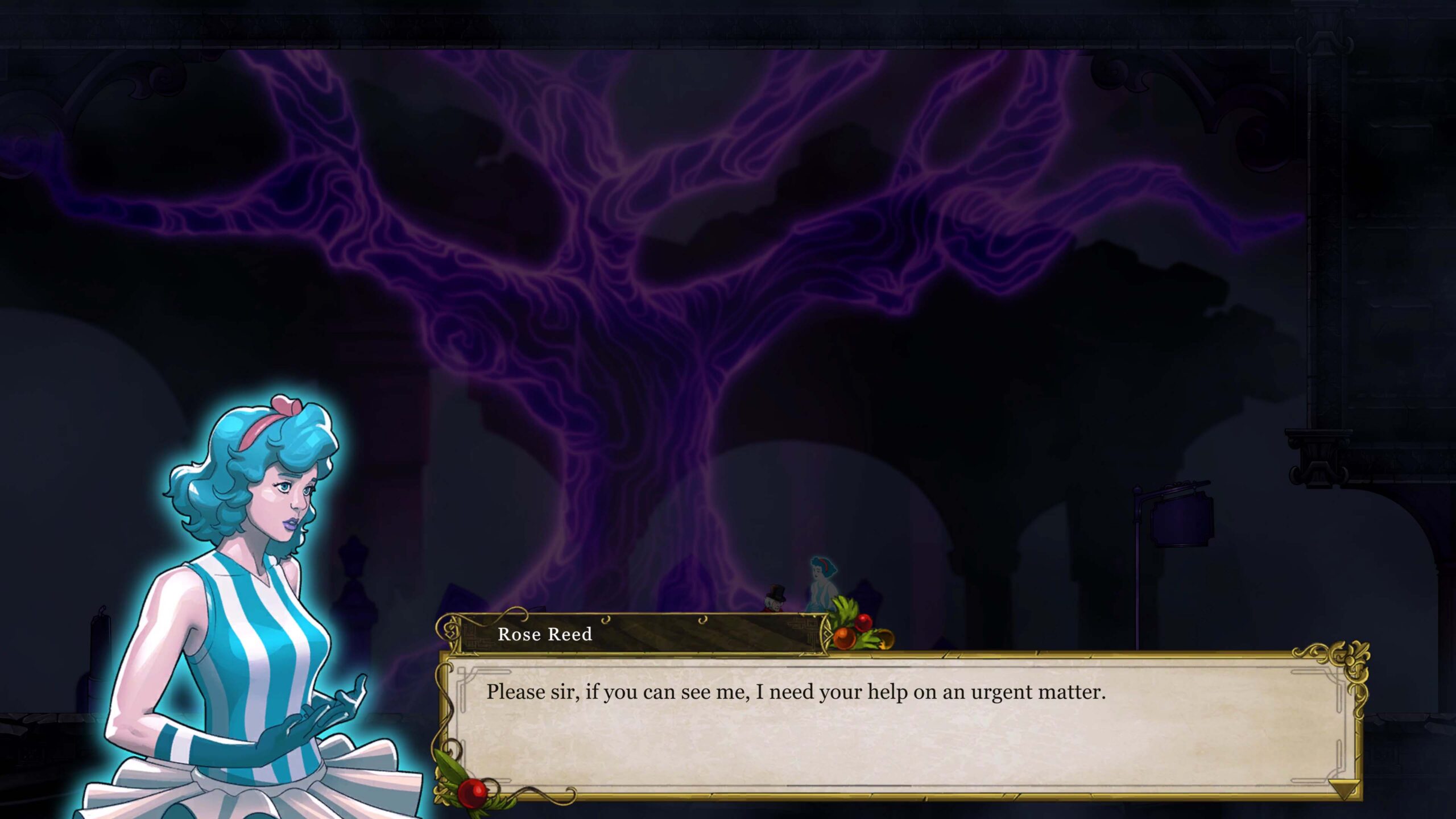
Importantly for making a fun game, ghosts provide incredible freedom in developing compelling gameplay. We focus on the potential of ghosts in creating gameplay mechanics and a narrative universe that is compelling, meaningful, and engaging.
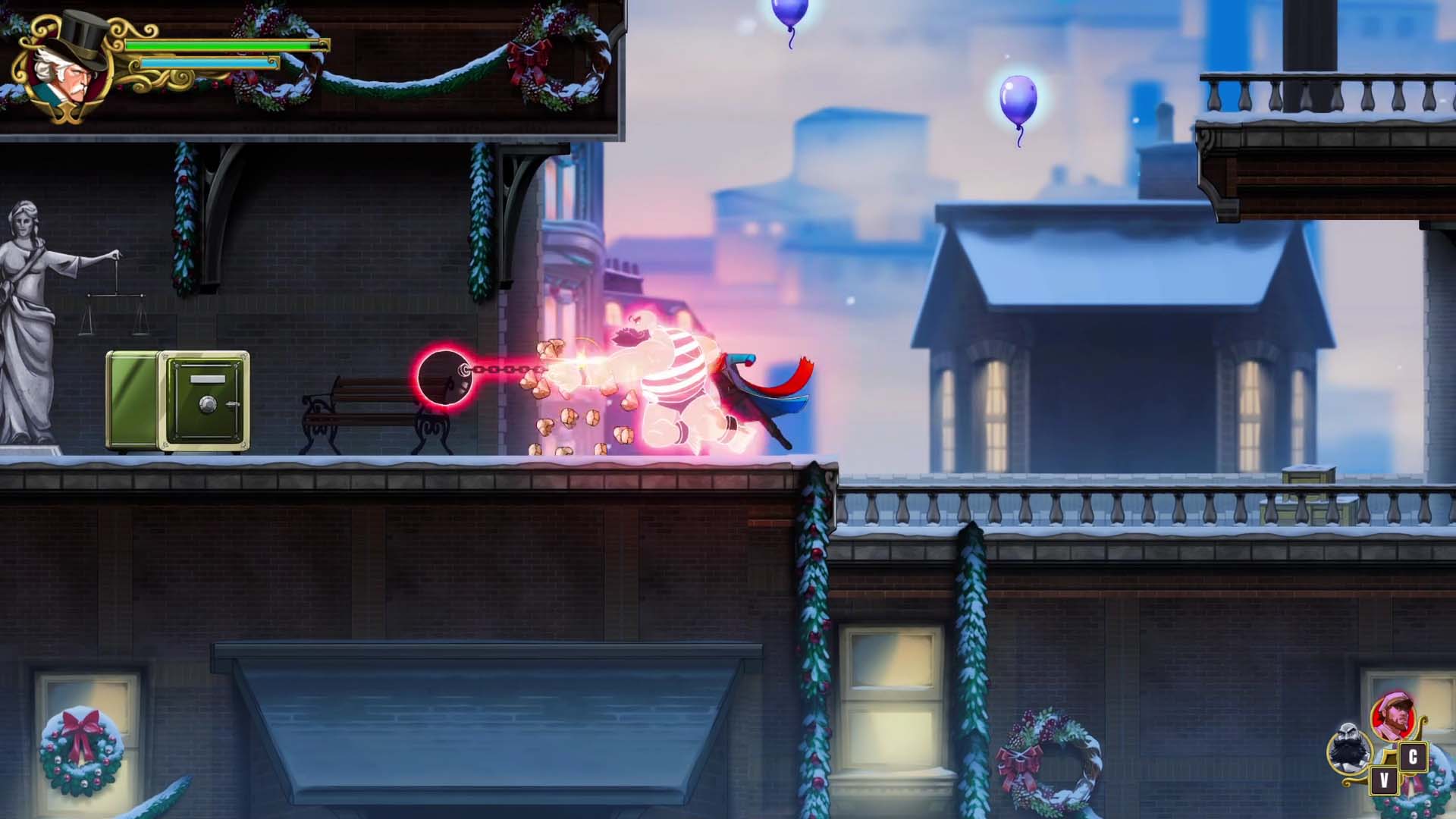
Powerful Ghosts and the Unrepentant
In Ebenezer and the Invisible World, a ghost will join Ebenezer on his adventure after completing a mission on their behalf. In gameplay, this means players can toggle between ghosts in the Ghost Select Wheel and, with the press of a button, summon the ghost to perform a special attack or movement. Each ghost has a unique special ability, contributing to the core gameplay loop in our Metroidvania, such as accessing previously gated areas, discovering secrets, and defeating new enemies.
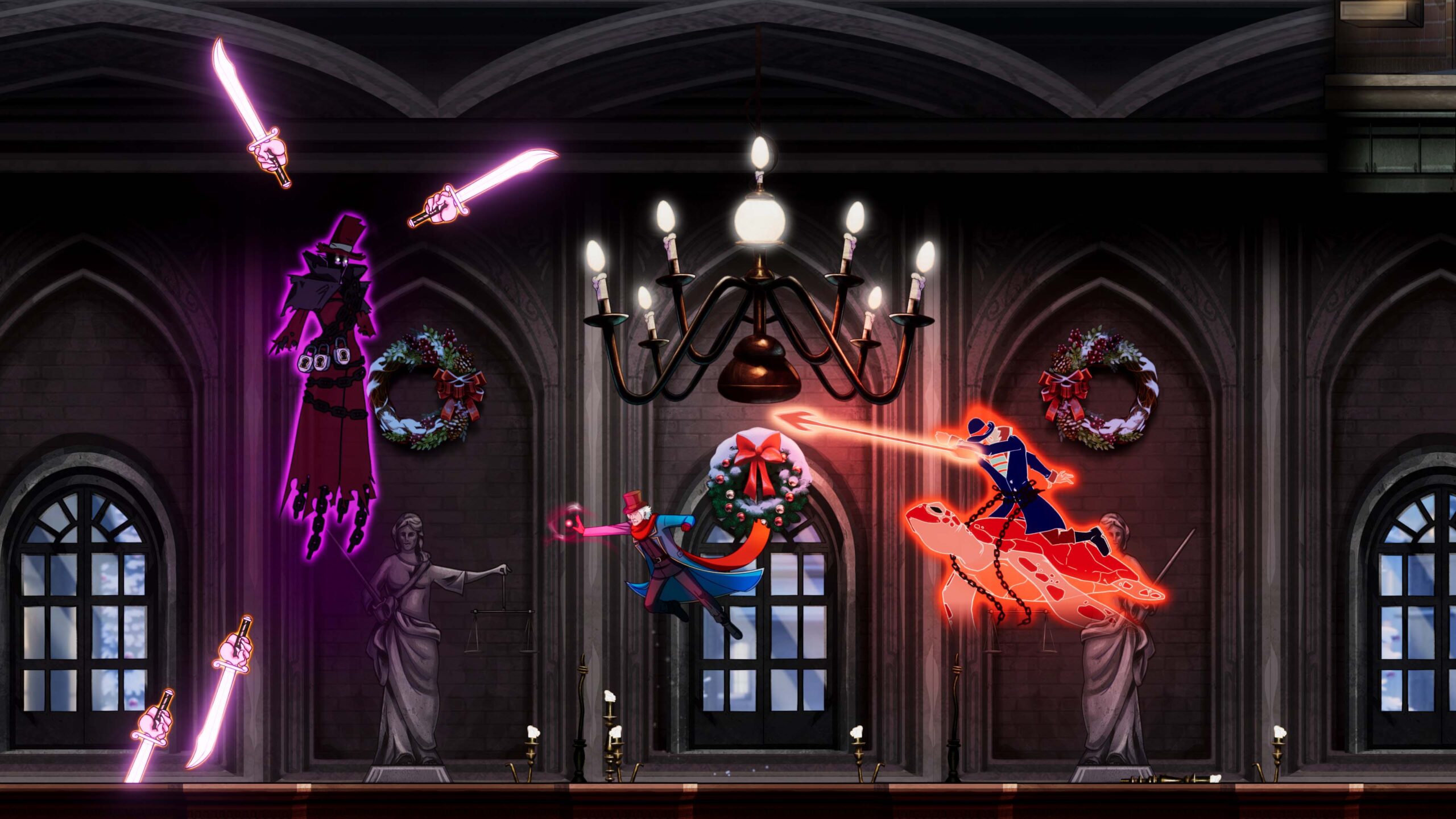
Ebenezer and the Invisible World also features ghosts as enemies, known as the Unrepentant. These are wicked ghosts that do not regret the misdeeds in their human life and instead are content continuing along their old ways. These ghosts spurn humankind and occupy abandoned areas, such as forgotten tunnels, the deep forest, abandoned homes, and other places typically void of human presence. Because they separate themselves from humanity, the Unrepentants’ spectral shape begins to lose its human form and appears more creature-like… more monstrous.
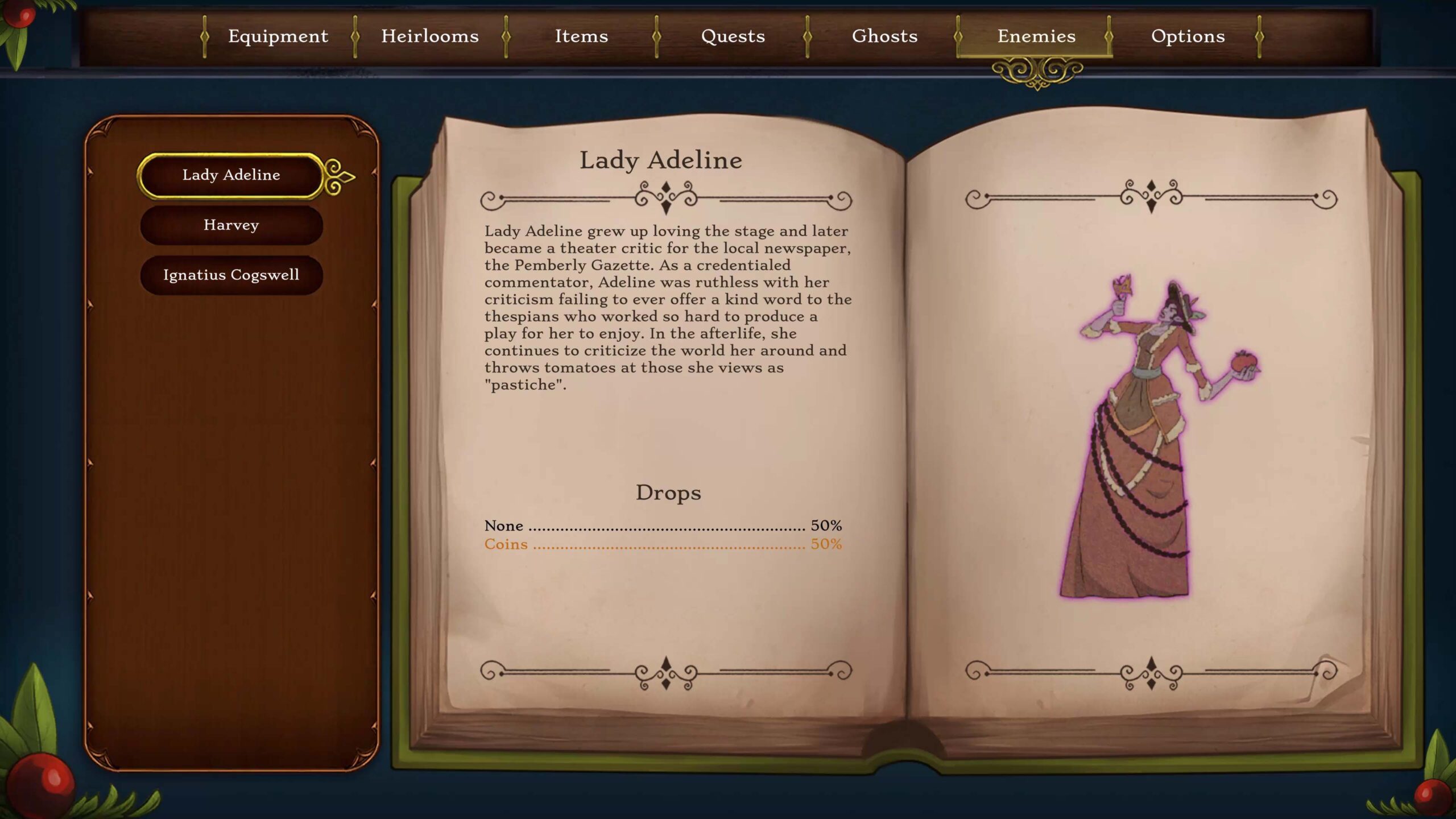
Ebenezer Reimagined
With this framework of the Dickensian universe, we began crafting the journey that our redeemed Ebenezer would embark on. Our central premise revolved around the notion that the events experienced by Ebenezer Scrooge during “A Christmas Carol” were not isolated incidents. Dickens implies that Ebenezer Scrooge is the only person to ever be visited by the Christmas Spirits, but we like to think that following Ebenezer’s first adventure, the connection between this “invisible world” and the real one only became stronger.
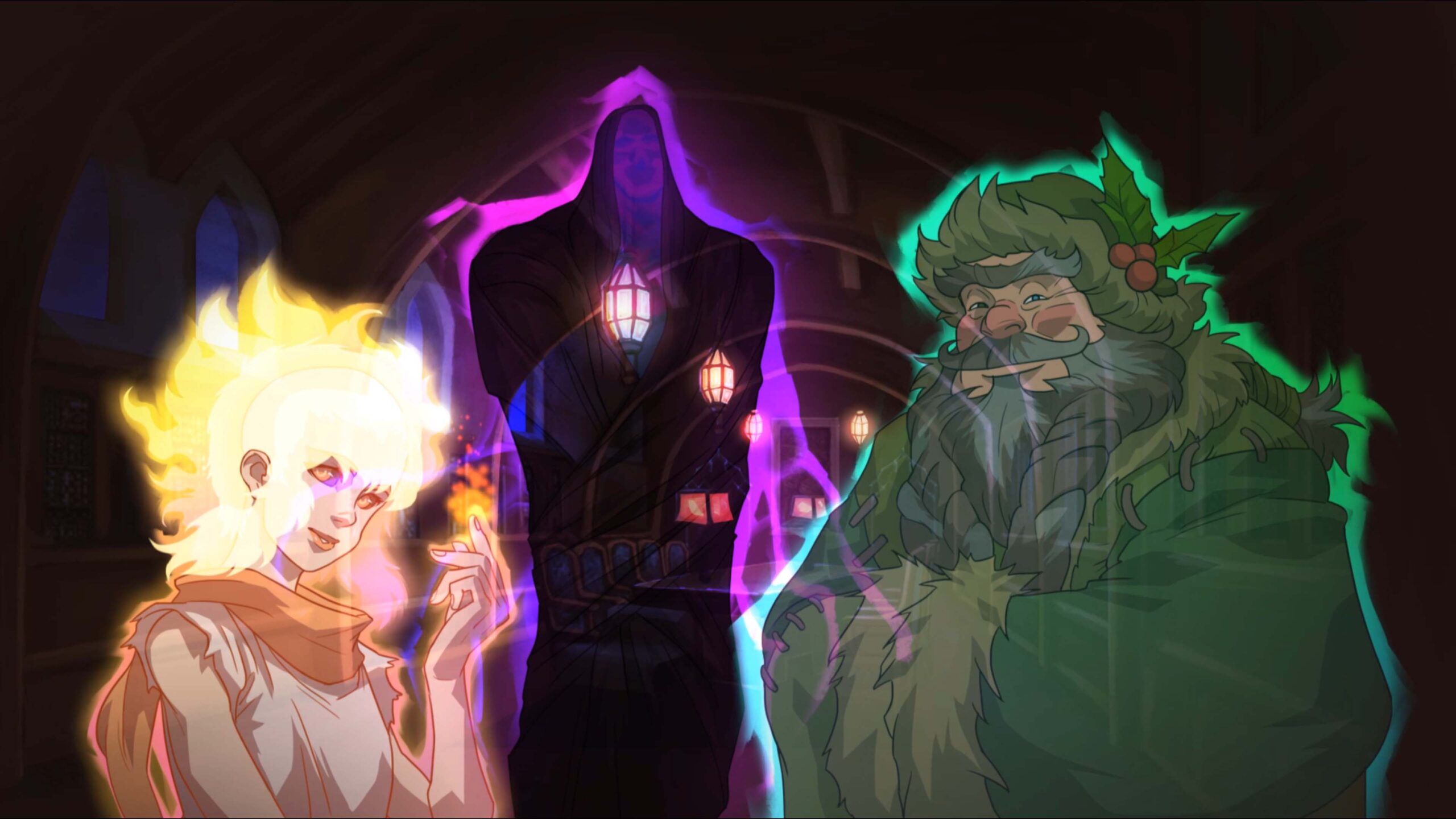
In our game, ghosts tethered to the mortal world who witness the moral decline of a friend or loved one call upon the Christmas Spirits to offer a chance at redemption, much like Jacob Marley did for Ebenezer before he was visited by the Christmas Spirits.
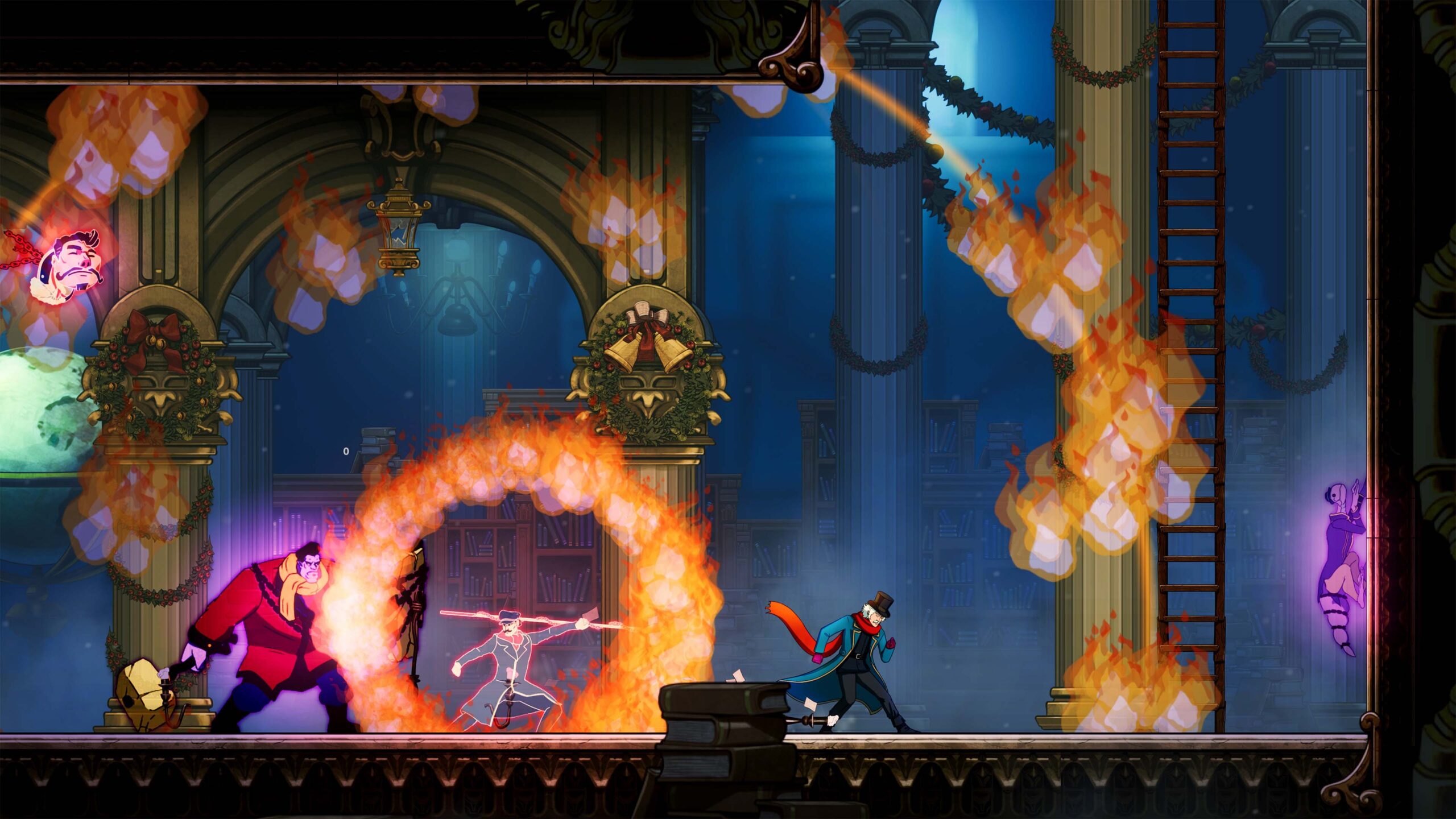
The story of Ebenezer and the Invisible World starts with the spirit of a deceased British naval officer Eric Fellows warning his childhood friend, the cold-hearted industrialist Caspar Malthus, that he would be visited by the Christmas Spirits. However, in the case of Caspar, rather than being persuaded by the Three Ghosts, he uses the information he obtained during his visit with the Ghost of Christmas Yet to Come to develop a technology that he would not be able to invent until far into his future. This future technology puts the workers of the city in crisis and brings chaos to London. Eric is horrified by this result and recruits Ebenezer to help rectify the situation. This is where our game begins.
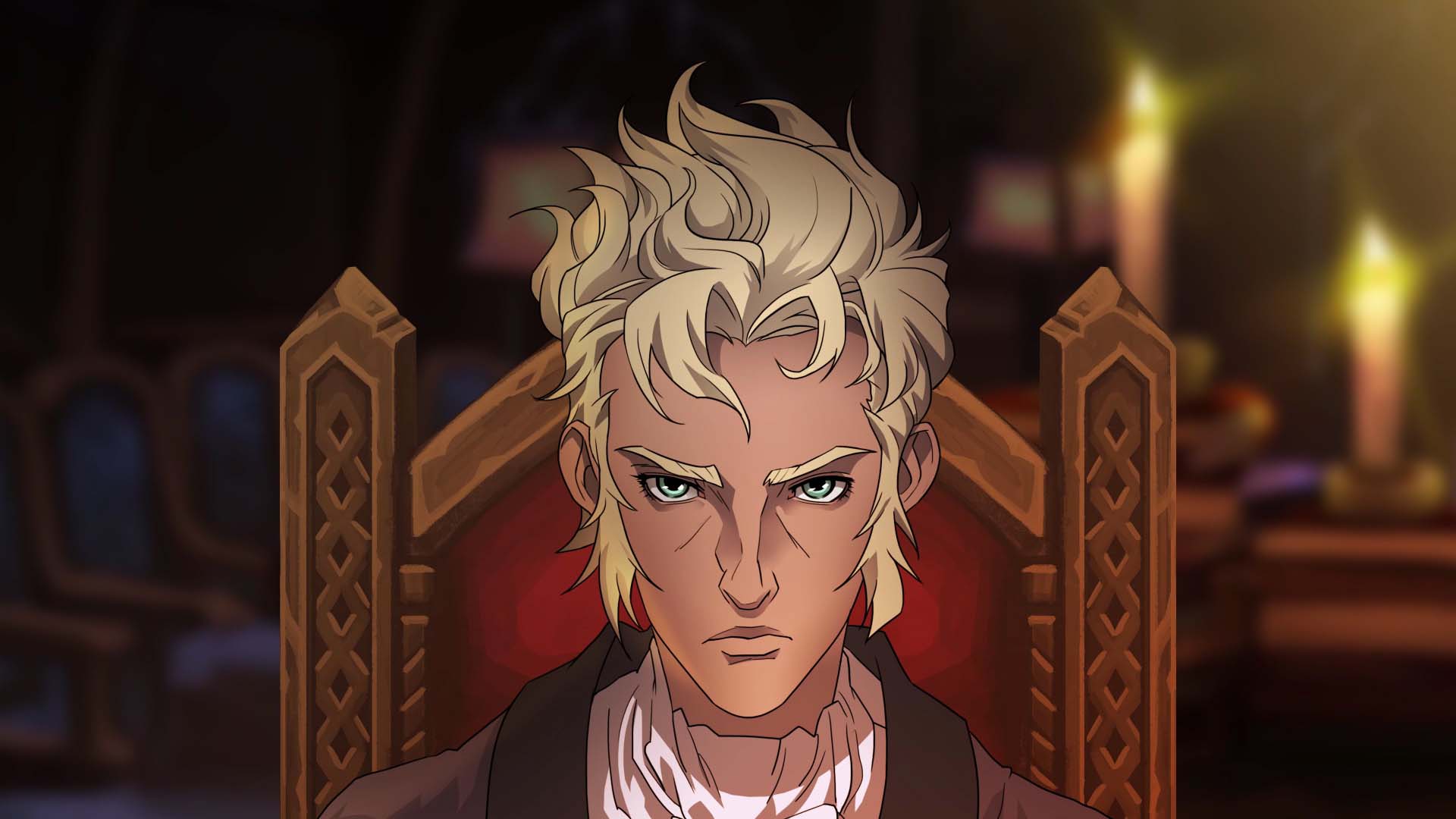
A Deep, Story Rich Metroidvania
Players will explore various segments of London from a celestial observatory to a terrifying asylum. They will meet ghostly friends and foes eager to lend a hand with their ghostly ability, or hell-bent on stopping him by any means necessary.
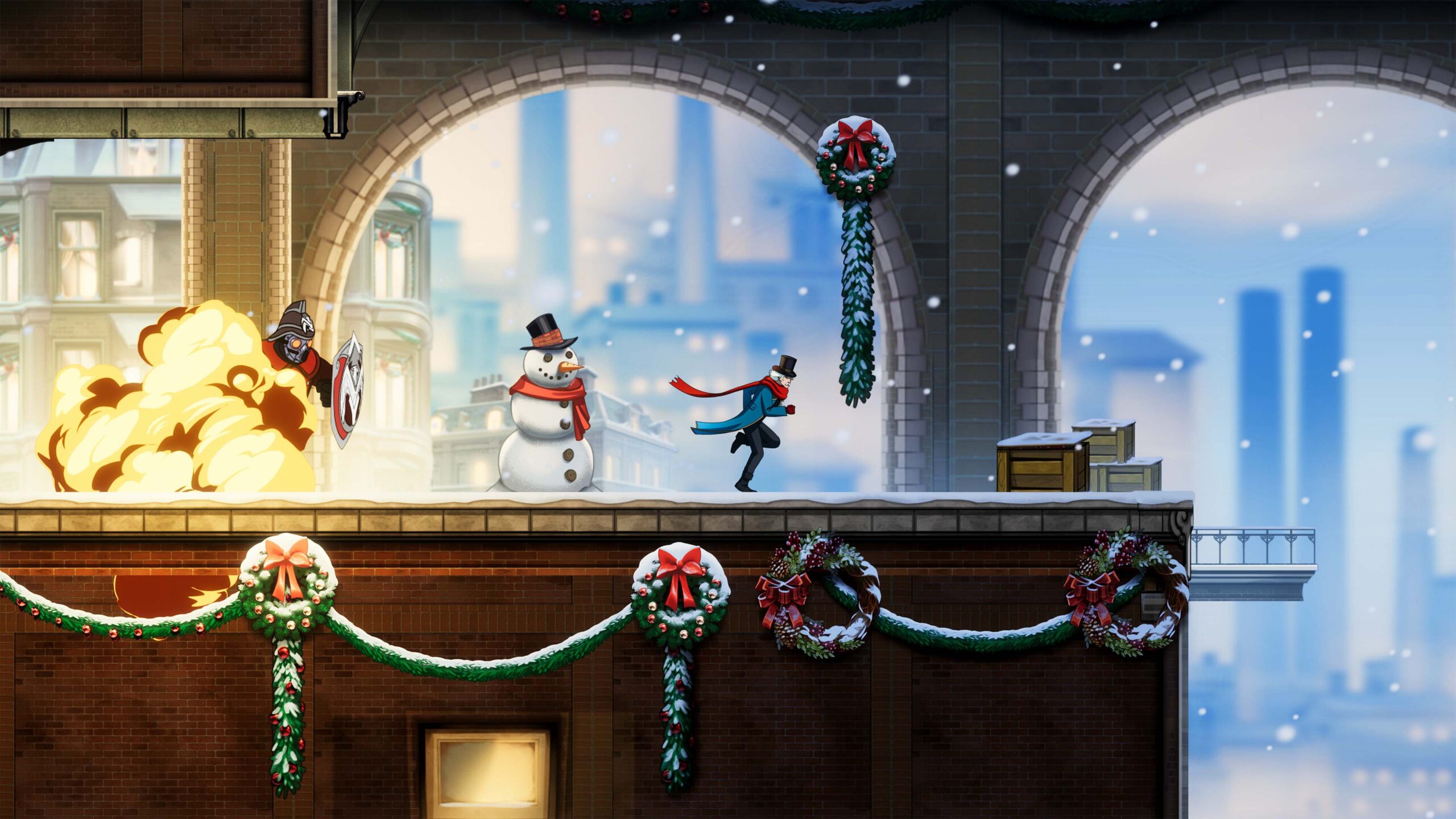
The game is filled with features including an Heirloom slot system, multiple attack Canes and Spirit Weapons, stat-buffing Spirit Kids, and a wealth of ghosts and NPCs with rich dialogue and backstories, with gameplay that reminds players that everyone deserves a second chance. And since it’s a Metroidvania, players will likely need a second…third…fourth…more chances to progress through the game and discover the true evil at play.
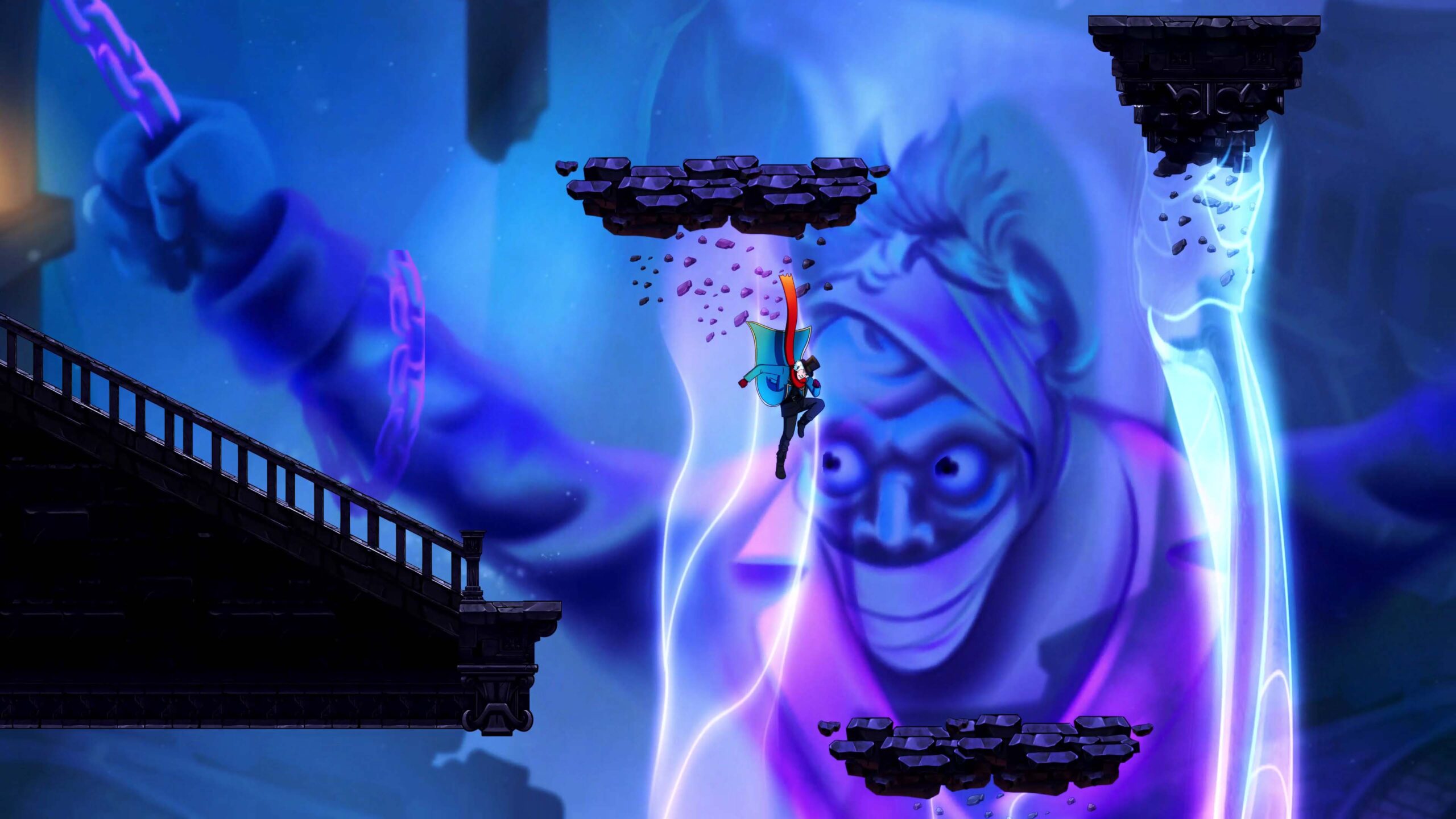
We hope Ebenezer and the Invisible World brings players a new way to celebrate the holidays, as well as pays homage to one of the most famous pieces of holiday literature of all time.
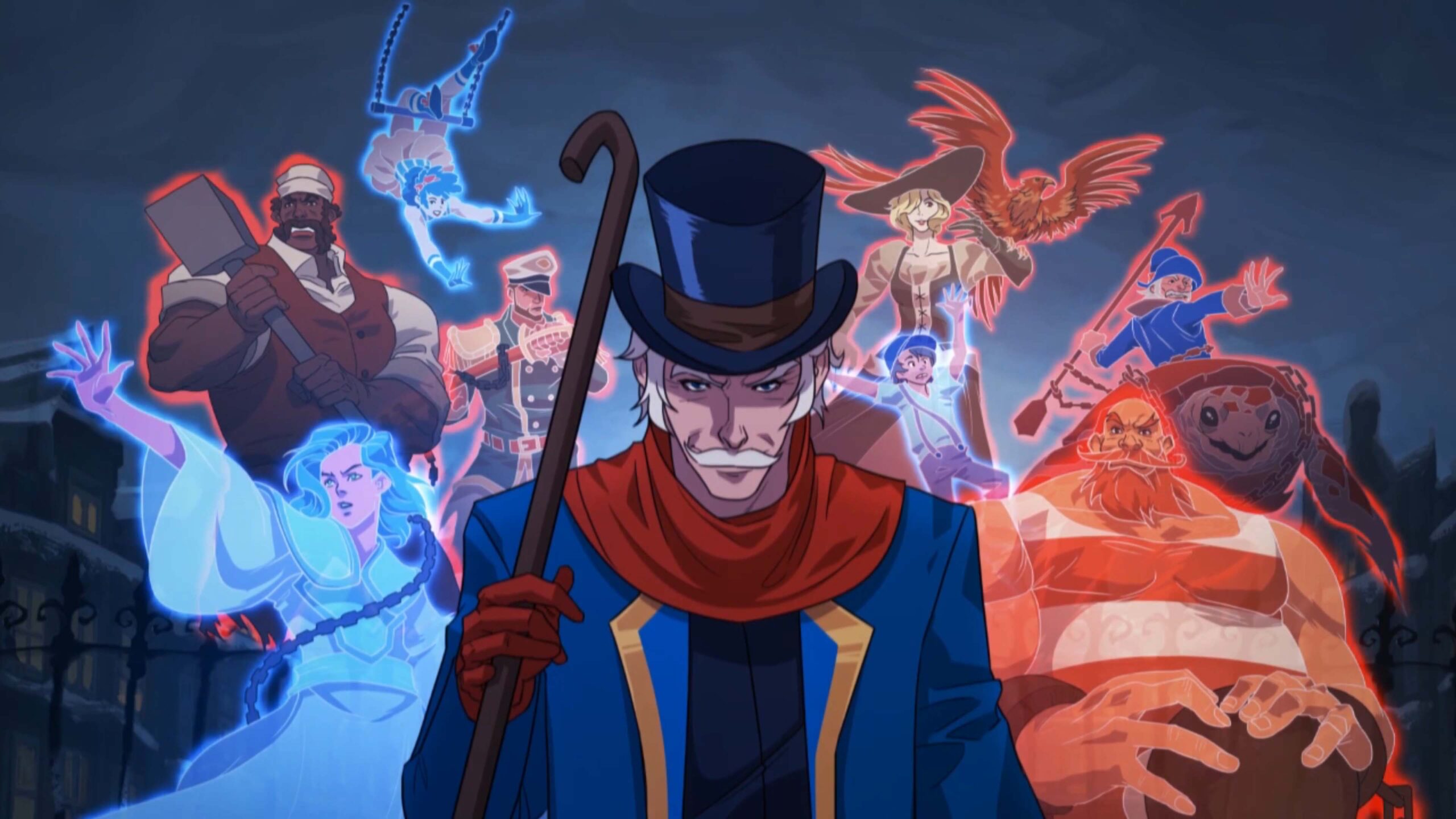

Ebenezer and The Invisible World
Play on Worlds
The post How Ebenezer and the Invisible World Adapts “A Christmas Carol” into a Metroidvania appeared first on Xbox Wire.
Source: Xbox Blog
—
